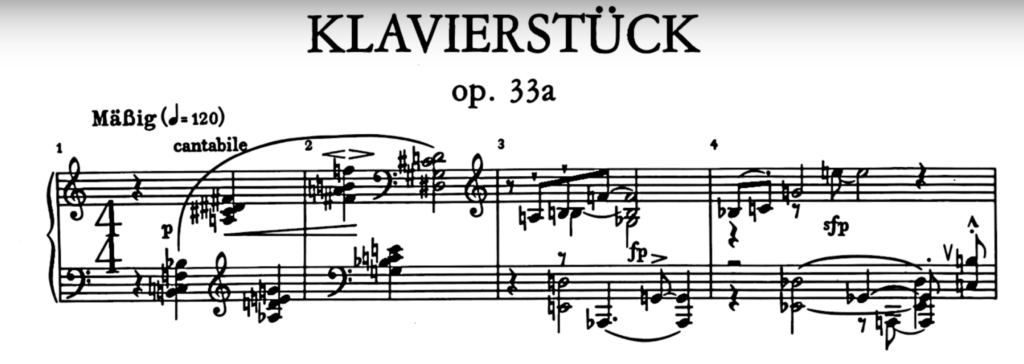Without familiar cadences to lead us through the piece, how are our ears supposed to latch on and follow? How did Expressionist or Serialist composers assert structure in their atonal pieces?
As an example, we can look to Schoenberg’s “Piano Piece, Op. 33”. Harmonically, the piece seems to wander, as his abstract, dissonant combinations of pitches never resolve. Instead, Schoenberg chooses to instill a sense of control through the piece’s rhythm. Throughout the piece, rhythms repeat, echoing each other or developing in a pattern so that the listener feels they can follow where the phrase is going.
For example, in the first two measures, clusters of tones are each assigned to a quarter note, so there is movement between each beat in the 4/4 meter. In effect, the piece begins with a strong statement before melting into a fluid collage of notes.

Similarly, in m.10-11, every quarter note in the right hand earns the response of an eighth note in the left hand. This staggered build of notes perfectly outlines the harmonic ascension and descension of the phrase so that it feels like every chord is layered on top of another chord.

Examining Schoenberg’s application of rhythm, it is interesting how a disregard for pitch organization, neglecting the formation of perfect, harmonious chords, leaves room for exploration of rhythm and texture. In other words, rhythm and texture may move to the forefront of the compositional process, since perfect harmonic conventions are not a concern.
